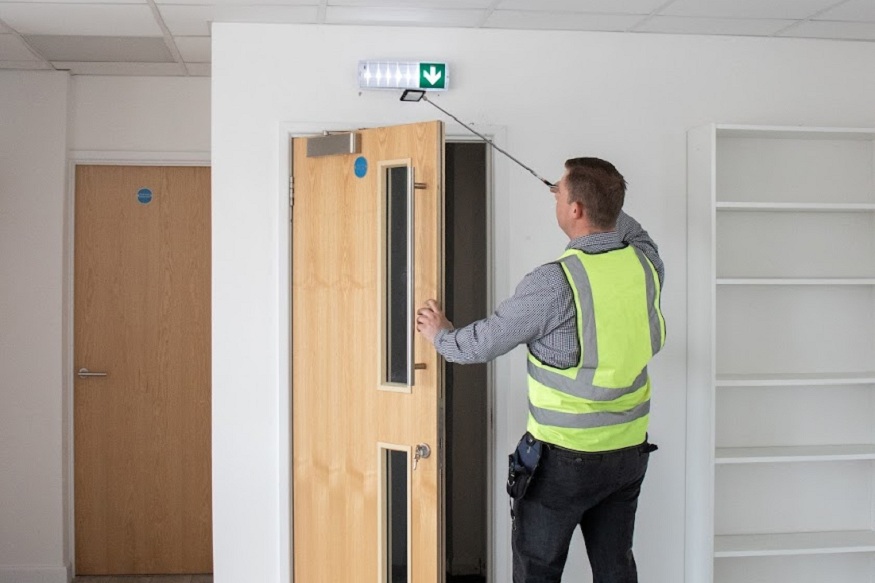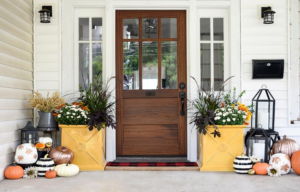The Grenfell Tower fire in 2017 was a watershed moment for building safety in the UK. It exposed severe failings in how high-rise and multi-occupancy buildings were constructed, maintained, and regulated. Legislative reforms have reshaped the responsibilities of landlords, managing agents, and building owners in the years since, with fire door compliance now front and centre.
This blog explores the new regulatory landscape in the wake of Grenfell, explains how the responsibilities for fire door safety have expanded and offers practical guidance for staying compliant. Property managers can confidently navigate these changes and protect their residents’ lives with trusted fire door partners like Capital Fire Doors.
The Post-Grenfell Reform Timeline
- The Fire Safety Act 2021
- Clarified that flat entrance doors and external walls are within the Fire Safety Order 2005 scope.
- The Building Safety Act 2022
- Created a new Building Safety Regulator and introduced a dutyholder regime for higher-risk residential buildings (HRRBs).
- The Fire Safety (England) Regulations 2022
- Imposed specific duties on responsible persons in buildings over 11 metres, including mandatory quarterly checks of communal fire doors and annual inspections of flat entrance doors.
These reforms have one thing in common: greater scrutiny and stricter accountability for fire safety performance, particularly in residential settings.
Fire Doors: From Afterthought to Priority
Before Grenfell, fire doors were often overlooked—poorly maintained, mismatched with their frames, or wedged open. They are essential to the integrity of compartmentation strategies and directly influence whether residents can safely escape a fire.
The post-Grenfell regulations now make it a legal obligation to:
- Inspect fire doors on a strict schedule
- Maintain clear records of checks and repairs
- Educate residents about the importance of keeping doors closed and undamaged
- Replace or upgrade non-compliant doors as a matter of urgency
Non-compliance is no longer treated as an administrative oversight. It is a breach of duty with real legal consequences.
What the New Laws Require in Practice
- Quarterly inspections of all fire doors in communal areas
- Annual inspections of all flat entrance doors
- Records of these inspections, including faults identified and actions taken
- Provision of fire safety information to residents
Many older buildings still contain doors that no longer meet the required standards. Whether through wear and tear or poor original installation, these doors put residents at risk. Now more than ever, landlords and agents must take proactive steps to assess and upgrade them.
Capital Fire Doors offers fully certified fire door inspection and replacement services to help building owners meet these updated requirements.
Common Compliance Challenges
Transitioning to the post-Grenfell standards has revealed several common challenges across residential buildings:
- Incomplete door asset registers
- Lack of documentation on legacy installations
- Confusion about responsibilities among managing agents and leaseholders
- Difficulty accessing individual flats for inspections
- Tenants misusing or damaging fire doors
Addressing these issues requires expert support, clear communication, and structured procedures. Capital Fire Doors’ inspection service helps landlords and property managers document the current condition of their doors, recommend remedial action, and generate compliant reports.
A Culture of Accountability
The most significant change since Grenfell is the cultural shift toward accountability. Building owners can no longer rely on reactive maintenance or vague fire risk assessments. The regulator expects clear evidence of active safety management, especially concerning fire doors.
Developers, freeholders, and managing agents must be able to demonstrate:
- All fire doors are correctly installed and certified
- That inspections are being carried out regularly
- That remedial works are addressed swiftly
- That tenants are informed of fire safety expectations
These duties apply regardless of property size, ownership model, or tenancy type. Best practice guidance is rapidly becoming the baseline, even in smaller buildings.
The Role of Fire Door Specialists
Working with qualified fire door professionals in this more demanding regulatory environment is no longer optional. Attempting to self-manage inspections, repairs, or installations can lead to costly mistakes and non-compliance.
Capital Fire Doors provides nationwide support for landlords and housing providers. Services include:
- Independent fire door inspections
- Maintenance and repair of non-compliant doors
- Replacement with certified fire door sets
- Complete documentation and asset registers for compliance
- Minimal disruption to tenants during works
Its reputation for precision, speed, and professionalism has made it a trusted partner across social housing, private developments, and commercial portfolios.
Future-Proofing Your Fire Door Strategy
As regulatory frameworks evolve, one thing is clear: firedoor compliance is now a continuous process, not a one-off project. It requires:
- Scheduled inspections
- Accurate record-keeping
- Ongoing education for residents
- A responsive partner who can deliver work quickly and to a standard
Whether catching up on historic issues or planning long-term upgrades, Capital Fire Doors can help you future-proof your approach.
Final Word
Post-Grenfell fire safety reform has reshaped the built environment’s approach to risk and responsibility. For landlords, agents, and housing providers, the message is clear: fire doors are a regulatory priority and a moral imperative.
Staying compliant isn’t just about avoiding penalties but saving lives. With expert support from Capital Fire Doors, you can meet every obligation with confidence, clarity, and care.


